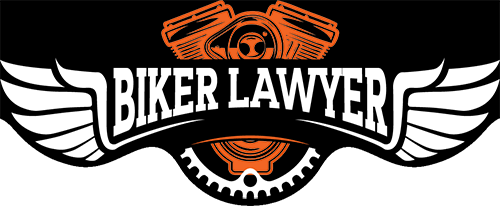A single motorcycle accident can have devastating effects that permanently change the trajectory of the victim’s life. On top of the physical and emotional tolls that emerge come the financial costs of treating common injuries. Especially for riders who are insufficiently insured, the bills and charges that arise from a motorcycle accident can sneak up, sometimes in the most unaccounted ways.
Some of the major expenses incurred in motorcycle accidents, both during initial recovery periods and long into the future, include the below.
Ambulance bills
Ambulances are usually the first medical service to arrive on the scene of a motorcycle accident. Even though they’re a “given” at accident sites, carrying life-saving supplies and personnel in addition to transporting patients to medical facilities, they can be shockingly expensive when their service bills arrive well after the fact.

GET A FREE CASE REVIEW
A no-obligation consultation with our Texas Legal Team
A major difference between ambulances and other authority vehicles is that many ambulance companies are privately owned — meaning they operate under a profit model, unlike police and fire departments. But whether the ambulance that takes care of motorcycle accident victims is public or private, they will issue an invoice for their services.
The charges on that bill can be unpredictable. An ambulance trip to the hospital can set patients back anywhere from $200 to over $2,500, even if the destination hospital is only a couple of miles away. Although insurance carriers typically handle the bulk of the cost, riders frequently must make an out-of-pocket payment. The big reason ambulances cost so much is overhead — equipment, training, outfitting, and fleet maintenance are major expenses for ambulance companies.
Hospital Stays
Hospital accommodations are pricey regardless of the reasons for the visit, but motorcycle crash patients are among those who pay the most for immediate institutional care. A 2014 study found that the average hospital costs for motorcyclists wearing helmets average around $15,000. Those who didn’t wear helmets when their accidents happened saw their hospital bills peaked at nearly $30,000.
After most motorcycle crashes, a victim’s hospital stay usually starts in the emergency room, where physicians use x-rays, brain scans, and other tests to determine the scope of the injury. If the doctors have any concerns about a patient’s health or safety, they’ll insist the patient stay in the hospital for at least a night or two. The cost for a night in the hospital without surgery can exceed $3,500.
Surgery
Most motorcycle accidents result in some sort of physical damage that requires surgical attention, whether it’s a minor operation to repair broken bones or a more drastic procedure needed to save a life.
The most common surgical procedures stemming from motorcycle crashes are operations to fix broken bones. For minor fractures like a broken arm, the average medical expense in 2018 was about $16,000; more serious fractures like hips or knees can run between $40,000 and $50,000, or even more.
More traumatic injuries — especially to the back, brain, or spinal cord — require more complicated surgical procedures since they can result in life-altering conditions to the patient. Surgery for even a mild head injury can cost at least $80,000; operations for more devastating brain injuries can run in the millions. Surgeries on the back or spinal cords, which are especially important to preserve physical functions, can cost more than $150,000.
Doctor Visits
Especially when surgery is required after a motorcycle accident, a patient may have to make follow-up visits to physicians to check on their progress. Depending on the severity or condition of the injury, this can cost around $300 to $600 per visit when the patient has no medical insurance. Many injuries cyclists suffer require more than one post-surgery trip to the doctor.
Medications
Prescription drugs are a hotly debated topic these days and the medications for a crash victim span an extensive range of treatable conditions. A doctor may prescribe pain medication or anti-inflammatory drugs to help; the cost to fill a prescription varies wildly among different areas and according to the specific treatment administered. Codeine, for example, can cost around $70 without insurance help.
Assistive Medical Devices
Assistive medical devices that help with mobility after a motorcycle accident are another common, major expense. Patients may require assistance from a walker, wheelchair or cane to preserve their mobility, and although many of those devices are available at over-the-counter retailers, it’s extremely important to use ones that are high in quality that your doctor explicitly recommends.
Wheelchairs constructed for consistent, everyday use generally run between $1,000 and $2,000. Top-level walkers can run between $100 and $170; the best canes usually run anywhere between $40 and $80.
In more severe motorcycle crash injuries that result in loss or amputation of limbs, it may be necessary for the victim to use a prosthetic device. An artificial leg can cost as little as $5,000 or as much as $50,000, but even the best quality prosthetic leg is built for a limited amount of wear and tear — usually no more than five years, often less. It is likely not a one-time expense.
Rehabilitation and Physical Therapy
Victims of motorcycle crashes may require months or even years of additional treatment to contain the effects of their injuries. Broken bones or torn muscles may require diligent, ongoing rehab just to regain normal strength. Even certain cases of road rash or burns may need ongoing therapy to prevent the formation of excess scar tissue, which can hamper mobility. Physical therapy can cost between $20 to $150 a session, depending on the injury treated.
Motorcycle accident victims with particularly traumatic injuries, especially to the brain or spinal cord, may need occupational therapy to regain everyday life skills at least partially. Occupational therapy runs much higher than less complex physical therapy, generally around double the cost.
In-home Services
A motorcycle accident victim may also require short- or long-term home care to carry out certain functions — anything from transportation and grocery shopping to getting through their daily routines or even getting dressed. The cost of in-home care, of course, depends on the extent of the services needed. Most in-home assistants charge rates for basic services, often at a rate of around $20 an hour.

